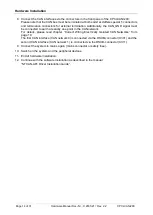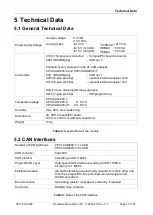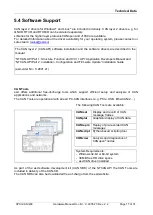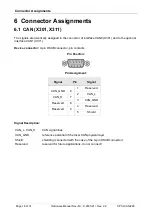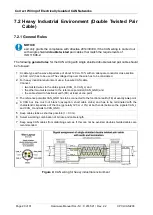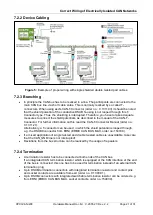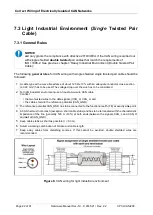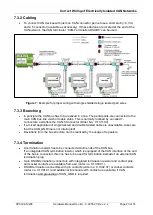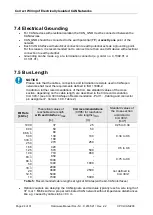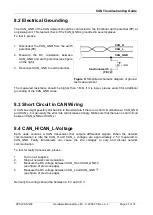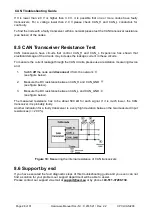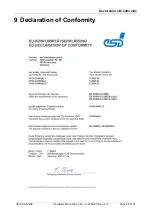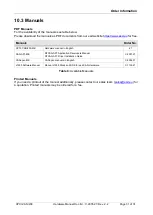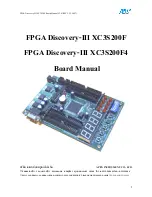
CAN Troubleshooting Guide
Page 28 of 31
Hardware Manual Doc.-Nr.: C.2035.21 / Rev. 2.2
CPCI-CAN/200
If it is lower than 2.0 V or higher than 3.0 V, it is possible that one or more nodes have faulty
transceivers. For a voltage lower than 2.0 V please check CAN_H and CAN_L conductors for
continuity.
To find the node with a faulty transceiver within a network please test the CAN transceiver resistance
(see below) of the nodes.
CAN transceivers have circuits that control CAN_H and CAN_L. Experience has shown that
electrical damage of the circuits may increase the leakage current in these circuits.
To measure the current leakage through the CAN circuits, please use a resistance measuring device
and:
1.
Switch
off
the node and
disconnect
it from the network
(see figure below).
2.
Measure the DC resistance between CAN_H and CAN_GND
(see figure below).
3.
Measure the DC resistance between CAN_L and CAN_GND
(see figure below).
The measured resistance has to be about 50
0 kΩ for each signal. If it is much lower, the CAN
transceiver it is probably faulty.
Another indication for a faulty transceiver is a very high deviation between the two measured input
resistances (>> 200 %).
Figure 10:
Measuring the internal resistance of CAN transceivers
If you have executed the fault diagnostic steps of this troubleshooting guide and you even can not
find a solution for your problem our support department will be able to assist.
Please contact our support via email at
+49-511-37298-130
.
8.5 CAN Transceiver Resistance Test
8.6 Support by esd

